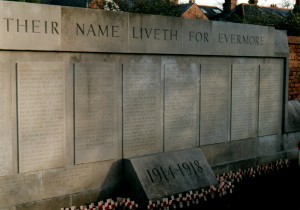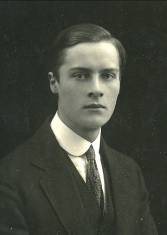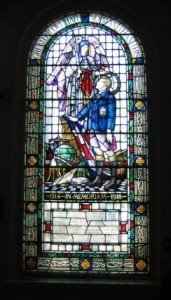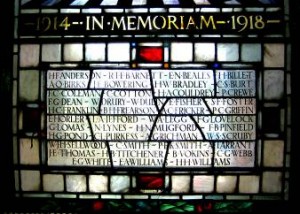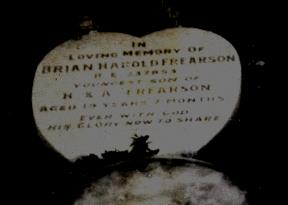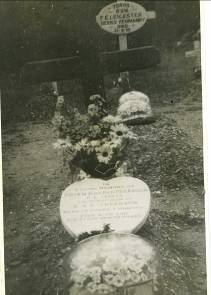Percy George Franklin
Gunner RMA/12600
H. M. S. “Vanguard”
Division 3
 |
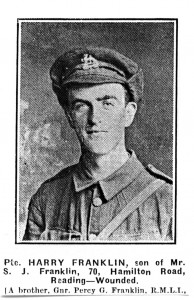 |
Percy Franklin was the son of John and Florence May Franklin. The 1901 census records John as a worker in a lumber yard. By 1911 he is the foreman. Both census records give the name as ‘Sir’, it isnot thought that this is a title as the picture above refers to Mr S J Franklin. During 1901 and 1911 the family lived at 20. St. Bartholomews Rd. By the 1911 census John has been married for two years to Milly Kate Franklin and they have one son aged 1 year. It is therefore assumed that Florence had died, possibly in child birth. There are four other children between the ages of 14 and 3 years in addition to Percy and Harry. Percy’s occupation is given as engineers clerk and Harry as a bank clerk. The family had moved to 70. Hamilton Road by the time that Harry was notified as wounded. The local papers record that Percy was a keen footballer, he played for the King’s Road Chapel team and whilst serving on the liner Queen Elizabeth he played football for the ship’s team.
In 1914 he was on board the “Aboukir” when it was torpedoed. During the week prior to the sinking he wrote to his parents. “Last week we swept the North Sea across, together, with about five other ships and eighteen destroyer, right from Sheerness to Heligoland. But, nothing happened, and we are still waiting our chance. When the time comes I think we shall show up well and keep the English name. But, till then keep watching and waiting”.
Percy survived the sinking only to be killed when there was an internal explosion in the “Vanguard” when the vessel was at Scapa Flow on 9 July 1917, of those on board at the time only three survived. He was aged 23 and left a wife Caroline Mary Franklin, of 48, Widley Rd. North End, Portsmouth. His name is commemorated upon the Portsmouth Naval Memorial, Hampshire.
Harry Franklin, Percy’s older brother, was wounded in the spine during the war and was in Hospital at No.1 War Hospital Reading when the death of Percy was confirmed. Although Harry survived the war he died in 1930 at the age of 38. Both Percy and Harry are commemorated on the headstone of their parent’s grave in Division 3, Reading Cemetery. Number 14859.
 |

